Related Research Articles
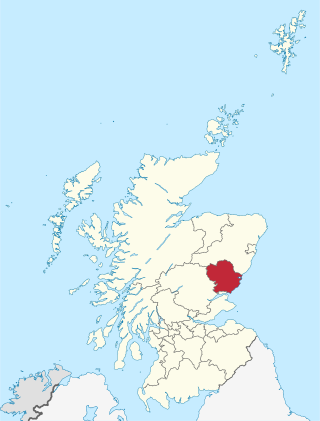
Angus is one of the 32 local government council areas of Scotland, and a lieutenancy area. The council area borders Aberdeenshire, Dundee City and Perth and Kinross. Main industries include agriculture and fishing. Global pharmaceuticals company GSK has a significant presence in Montrose in the east of the county.

Perth and Kinross is one of the 32 council areas of Scotland, and a lieutenancy area. It is bordered by Highland and Aberdeenshire to the north, Angus, Dundee, and Fife to the east, Clackmannanshire to the south, and Stirling and Argyll and Bute to the west.
Michael Fraser Weir is a Scottish National Party (SNP) politician who served as Member of Parliament (MP) for Angus in Scotland from 2001 to 2017 when he lost his seat to the Conservative Party. He served as the SNP Chief Whip in the House of Commons. Weir used to be a councillor and Convenor of the General Purposes Committee of Angus District Council. Prior to his election in 2001, he was a solicitor and Partner for J&DG Shiell in Brechin.
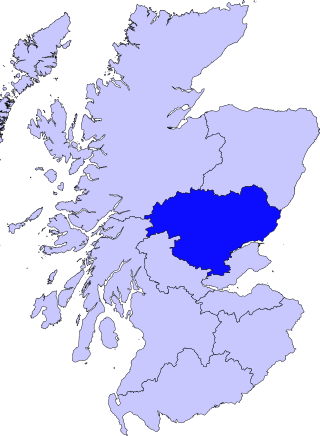
Tayside was one of the nine regions used for local government in Scotland from 16 May 1975 to 31 March 1996. The region was named after the River Tay.

Angus was a county constituency of the House of Commons of the Parliament of the United Kingdom. It elects one Member of Parliament (MP) by the first-past-the-post voting system. It is currently represented by Dave Doogan of the Scottish National Party who has been the MP since 2019.
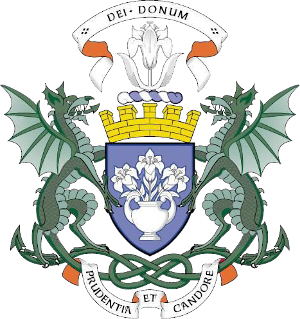
Dundee City Council is the local authority for Dundee City, one of the 32 council areas of Scotland. In its modern form it was created in 1996. Dundee was formerly governed by a corporation from when it was made a burgh in the late twelfth century until 1975. Between 1975 and 1996 the city was governed by City of Dundee District Council, a lower-tier authority within the Tayside region.
Angus MacDonald JP DL is a former Scottish National Party (SNP) politician. He was the Member of the Scottish Parliament (MSP) for Falkirk East from 2011 to 2021.
Elections to Angus Council were held on 3 May 2007 the same day as the other Scottish local government elections and the Scottish Parliament general election. The election was the first one using 8 new wards created as a result of the Local Governance (Scotland) Act 2004, each ward will elect three or four councillors using the single transferable vote system a form of proportional representation. The new wards replace 29 single-member wards which used the plurality system of election.

Banffshire and Buchan Coast is a constituency of the Scottish Parliament (Holyrood) covering parts of the council areas of Aberdeenshire and Moray. It elects one Member of the Scottish Parliament (MSP) by the first past the post method of election. It is one also of ten constituencies in the North East Scotland electoral region, which elects seven additional members, in addition to ten constituency MSPs, to produce a form of proportional representation for the region as a whole.

Angus North and Mearns is a constituency of the Scottish Parliament (Holyrood) covering parts of the council areas of Angus and Aberdeenshire. It elects one Member of the Scottish Parliament (MSP) by the first past the post method of election. It is one of ten constituencies in the North East Scotland electoral region, which elects seven additional members, in addition to the ten constituency MSPs, to produce a form of proportional representation for the region as a whole.

Angus South is a constituency of the Scottish Parliament (Holyrood) covering part of the council area of Angus. It elects one Member of the Scottish Parliament (MSP) by the first past the post method of election. In addition, it is one of ten constituencies in the North East Scotland electoral region, which elects seven additional members, in addition to the ten constituency MSPs, to produce a form of proportional representation for the region as a whole.

Aberdeenshire East is a constituency of the Scottish Parliament (Holyrood) covering part of the council area of Aberdeenshire. It elects one Member of the Scottish Parliament (MSP) by the first past the post method of election. It is also one of ten constituencies in the North East Scotland electoral region, which elects seven additional members, in addition to the ten constituency MSPs, to produce a form of proportional representation for the region as a whole.

Aberdeenshire West is a constituency of the Scottish Parliament (Holyrood) covering part of the council area of Aberdeenshire. It elects one Member of the Scottish Parliament (MSP) by the first past the post method of election. Also, however, it is one of ten constituencies in the North East Scotland electoral region, which elects seven additional members, in addition to ten constituency MSPs, to produce a form of proportional representation for the region as a whole.

Elections to Angus Council were held on 3 May 2012 the same day as the other Scottish local government elections. The election used the eight wards, created as a result of the Local Governance (Scotland) Act 2004, with each ward electing three or four councillors using the single transferable vote system form of proportional representation, with 29 Councillors being elected.
The 1974 Angus District Council election took place on the 8 May 1974 to elect members of Angus District Council, as part of that years Scottish local elections.
The 1977 Angus District Council election took place on the 3 May 1977 to elect members of Angus District Council, as part of that year's Scottish local elections.
The 1980 Angus District Council election took place on the 1 May 1980 to elect members of Angus District Council, as part of that year's Scottish local elections.
The 1984 Angus District Council election took place on the 1 May 1984 to elect members of Angus District Council, as part of that year's Scottish local elections. They were fought on revised boundaries, with 21 seats down from 22.
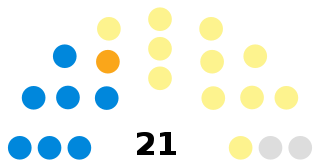
The 1992 Angus District Council election took place on the 7 May 1992 to elect members of Angus District Council, as part of that year's Scottish local elections.
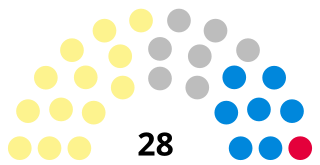
Elections to Angus Council took place on 5 May 2022, the same day as the 31 other Scottish local government elections. As with other Scottish council elections, it was held using single transferable vote (STV) – a form of proportional representation – in which multiple candidates are elected in each ward and voters rank candidates in order of preference.